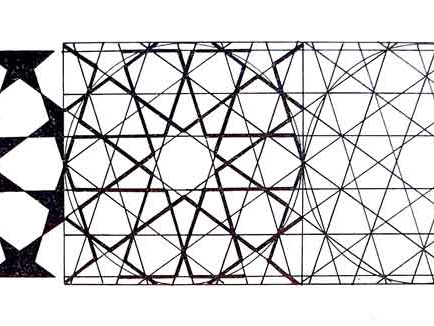The ancient Maori peopled his world with imaginative yet clearly defined God's, and manifestations. He had his own vivid account of the creation of the world, The Separation and the clothing of the Earth mother, and the ornamenting of the sky father with son, moon and stars by Tane-matua. Tangaroa, the god of the sea, is at war with Tane of the forests, and both are attacked by Tawhiri-matea, the god of the winds.
The Adventures of the gods of the Maori Pantheon had an important influence on thought and custom, and provided assurance that man and his surroundings were under the guardianship of Gods who were prepared to protect those who honoured them.
There were tender stories of love and endurance, terrifying tales Of Monsters and ghostly creatures in the night, and belief in an afterlife. There were enchanted people of the forest, supernatural animals Who preyed on human beings, and malignant sea creatures who invaded the land by night.
There were many stories of the sun, moon and stars. Mountains, rivers, and Lakes were given names and characters and often acted as human beings, as also did the trees and Forest plants, the wind and the weather.
The ancestors of the Maori people came to New Zealand from the central Pacific region about 1000 years ago. Apart from the great traditional heke or migration of the 14th century, they remained isolated from the remainder of that vast area of the Pacific known as Polynesia. As a result the ancient traditions were modified and richly embroidered to such an extent that it may be said that the folklore of the many islands of the Pacific came to its full beauty in this remote Land.
The gods of Aotearoa are found in many islands of Polynesia, but in No Other Place were the cosmogony and Pantheon of Gods more clearly and imaginatively defined than a month the Maori people, who lives close to nature and endued their surroundings with unending variety of personifications of natural phenomena.
Myths Legends and folktales seem always to Spring from and retain the characteristics of the landscapes of their origins. So, the black forest of Germany automatically conjure up the images of the Brothers Grimm. The soft twilight's of Scotland Evoke Celtic folklore and the tales of Bonnie Prince Charlie. The expenses of Australia give immediate meaning to the Aboriginal stories of earth fire and Water.
The New Zealand landscape, different from these, lens its own characteristics to the legends of the Marie. Stories of trees, mountains, Lakes, demons, fairies, underworld's and over world's, and all manner of phenomena that affected his daily existence.
The cycle of legends centred on the cult hero Maui outrivalled those of the same demi-god who was well known throughout the pacific basin.
Maui-nukurau - The Deceiver
Maui-whare-kino - The Evil House
Maui-tinihanga - The Many Devices
Maui-i-toa - The Brave
Maui-i-atamai - The Kind
Maui-mohio - The Wise
Maui-mata-waru - The Eight Eyes, The Supernatural
These were some of the descriptive names applied to the whimsical, irresponsible demi-god of Polynesia. After a miraculous birth and upbringing he won the affection of his parents, taught useful arts to mankind, snared the sun, tamed fire, discovered New lands by pulling them up from the bed of the sea, and eventually met his death while attempting to kill the goddess of death, Hine-nui-o-te-po. His greatest deeds were of untold benefits to mankind, but his malicious humour made his relatives highly suspicious of his motives.
Te Ra, the sun, travelled swiftly across the sky. The hours of daylight were
short. The nights were long and there was barely time to cook the morning
and evening meal, no time to cultivate the plantation, to make war, to hunt.
to fish, no time even to love.
“I'm going to capture the sun and force him to move more slowly!"
Maui said to his brothers.
"Why?"
"It will make the days longer."
Listen," they said earnestly, knowing how much trouble some of his
experiments had caused. No good can come of such foolishness, Leave the
Sun alone.”
Maui laughed. “We shall do it together.”
“We can never tame the sun," they protested. He would burn us up
before we could get near him."
“Not if you follow my plan," Maui said eagerly. We'll plait strong ropes
of flax. Early tomorrow morning we'll take them to where the sun rises.
We can easily build shelters to shield us from the heat."
After some persuasion his brothers reluctantly set to work to plait ropes
for flax fibre. As it was an unknown art, Maui had to teach them how to
spin the fibre into flat, round, and square ropes with three and five strands.
It was a long journey, but at last they reached Te Rua-o-te-Ra, the Cave
of the Sun. When he rose above the horizon a coil of rope fell over his head
and shoulders, and another and another.
“Pull hard," Maui shouted. "Don't let him get away.'"
Leaving his brothers to maintain the strain on the ropes, he ran towards the
sun. From his girdle he pulled out his favourite weapon, the jawbone of his
ancestor Muri-ranga-whenua, and belaboured the helpless sun until he cried
for mercy. Maui chanted a powerful spell, known as a punga, to keep the
sun from moving.
“Are you trying to kill Tama-nui-te-ra, the great son of the sun?" said
Tama in a weak voice, as he struggled to break the ropes. It was a significant
remark, for it was the first time that the sacred name of the sun had ever been
revealed.
“I have no wish to harm you. If you promise to travel more slowly in
future, I’Il let you go."
"No," said great Tama stubbornly. Why should I change my habits on
your account?”
“This is why,"
Maui said and battered the sun until he was weakened.
When he was released he limped so slowly across the sky that men and women
were able to cook their food, eat, work, play and make love at their leisure,
while from his wounds came the bright rays we know as sunbeams.
After his long labour and the heat of the sun, Maui was thirsty. He called
Tieke, the saddleback, to bring him a drink of water. The bird took no notice.
Maui caught it in his hands and hurled it into the water. Where his hot hands
touched Ticke's back the feathers were burned brown. He called Hihi, the
stitchbird, but it also ignored the demi-god. Maui threw it into a fire that
tinged its plumage with yellow. Ever afterwards the stitchbird was nervous
and timid. Toutouwai, the robin, was equally unco-operative and was marked
with a patch of white at the root of its bill "as a mark of incivility". It was
Kokako, the blue-wattled crow, who helped him. It flew to the water and
brought back as much as it could carry in its cars. Maui rewarded it by pulling
its legs so they were long and could move quickly.
There is another legend about Maui and the sun that refers to a period of
perpetual daylight. The demi-god had become angered by the foolishness of
mankind. They were so stupid that Maui felt the sunshine was being wasted.
on them. He held up his hand to stop the sunlight. It seems that he was unaware of the heat of the sun, for his hand was badly burnt. He rushed to the sea to assuage the pain and for the first time the sun set and darkness rushed across the land.
Maui rushed after the fleeing sun and dragged it back. It escaped and
Maui pulled it back a second time and tied a long rope to
it, attaching the other end to the moon.
When the sun set the moon was dragged above the horizon, giving light
to the world by night as the sun had done by dav.
Maui experimented more cautiously this time and found that he could hide
the moon behind his hand without burning himself. Since then he has continued to use his hand to control the appearances of the moon.





